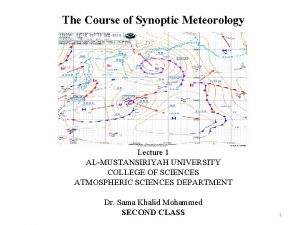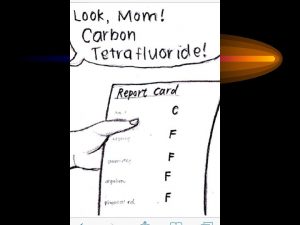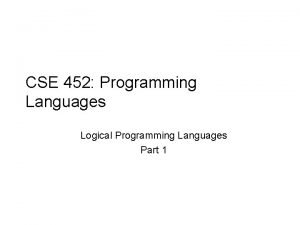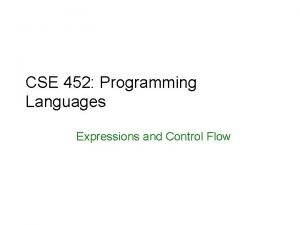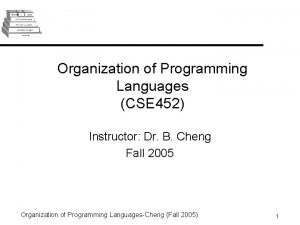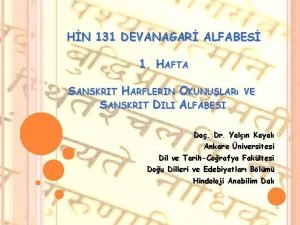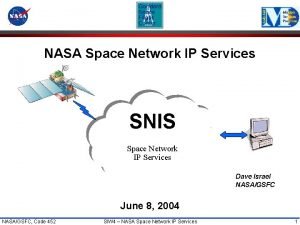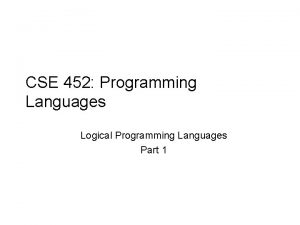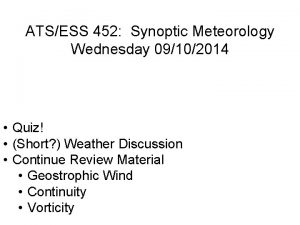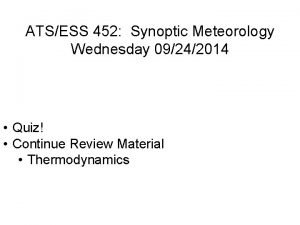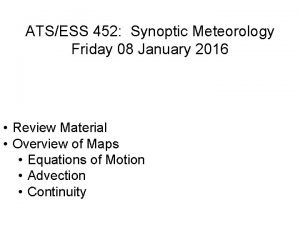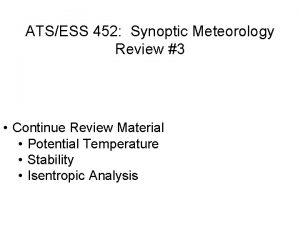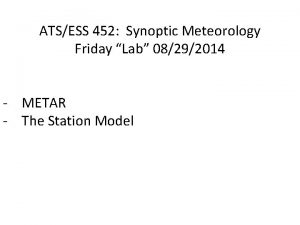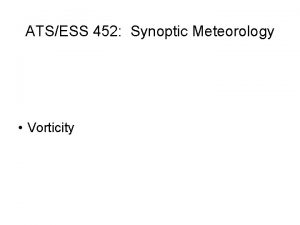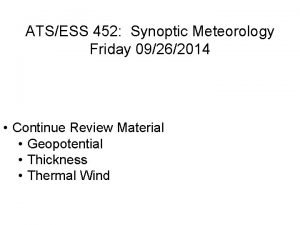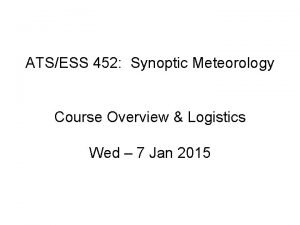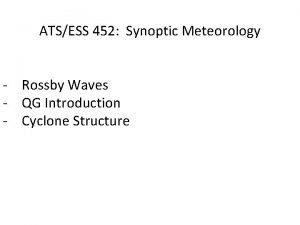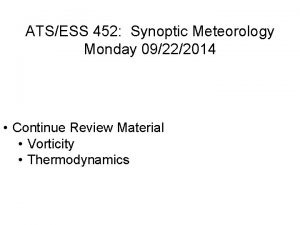ATSESS 452 Synoptic Meteorology Wednesday 09122014 Discuss Quiz











- Slides: 11

ATS/ESS 452: Synoptic Meteorology Wednesday 09/12/2014 • Discuss Quiz #1 and Lab Assignment #2 • Continue Review Material • Continuity • Vorticity

Temperature Advection

Geostrophic Wind **A scale analysis of the *horizontal* governing equations reveals that only the pressure gradient force and Coriolis are important on the synoptic scale The resulting balance between these terms is called geostrophic balance, which yields the geostrophic wind **At the synoptic scale, in the Northern hemisphere, the geostrophic wind blows parallel to isobars (isoheights) with low pressure (low heights) to the left. Geostrophic balance allows the governing equations to be simplified considerably and allows the development of quasi-geostrophic theory (chapter 2)

Notice how wind in this 500 mb map is flowing west to east, generally paralleling the isoheights geostrophic balance

Geostrophic balance does not always apply surface

Vertical Momentum Equation Vertical acceleration Vertical PGF Coriolis gravity friction Which terms are left if you perform a scale analysis on this equation? All that remain are the vertical PGF and gravity. The balance between these two terms is called hydrostatic balance. **Synoptic scale motions are largely in hydrostatic balance in the vertical direction If we are to assume hydrostatic balance, then are we assuming no vertical air motion (i. e. no vertical acceleration)? NO… they’re just very small compared to the vertical PGF and gravity

Continuity Equation • This relation is based on the conservation of mass (in a closed system, mass will not change). • The kinematic method uses the continuity equation to estimate vertical motion - Not very accurate - Errors in actual wind observations will lead to very large errors in the vertical motion estimate • Convergence of winds at the surface leads to vertical motion • What do you think convergence aloft leads to? Divergence of winds aloft? (sinking air) (rising air) • Being able to correctly diagnose and forecast divergence and convergence aloft is an important component of this course

Most 700 mb charts show negative values of “omega”…. Realize the differences between w and ω

Vorticity • What is vorticity, and why do we study it? • Why do we focus on the vertical component?

Vorticity • Tornadoes, hurricanes, and extratropical cyclones are all characterized by varying degrees of wind rotation about a vertical axis • Vorticity is the parameter we use to measure the rotation • Vorticity is a measure of rotation in all three directions/axes (x, y, z), however, on the synoptic scale we are primarily interested in the vertical vorticity (scale analysis!) • Relative vorticity represents the local rotation in a fluid (our atmosphere). If we include the rotation of the Earth, then we refer to it as the absolute vorticity. • In the Northern hemisphere, positive vorticity is associated with cyclonic rotation (counter-clockwise) and negative vorticity is associated with anti-cyclonic rotation (clockwise) • **Advection of the vertical vorticity is related to forcing for vertical air motion (lift) and is a critical parameter for weather forecasting.

NAM 500 -mb height, absolute vorticity analysis 00 UTC 11 Jan 12
